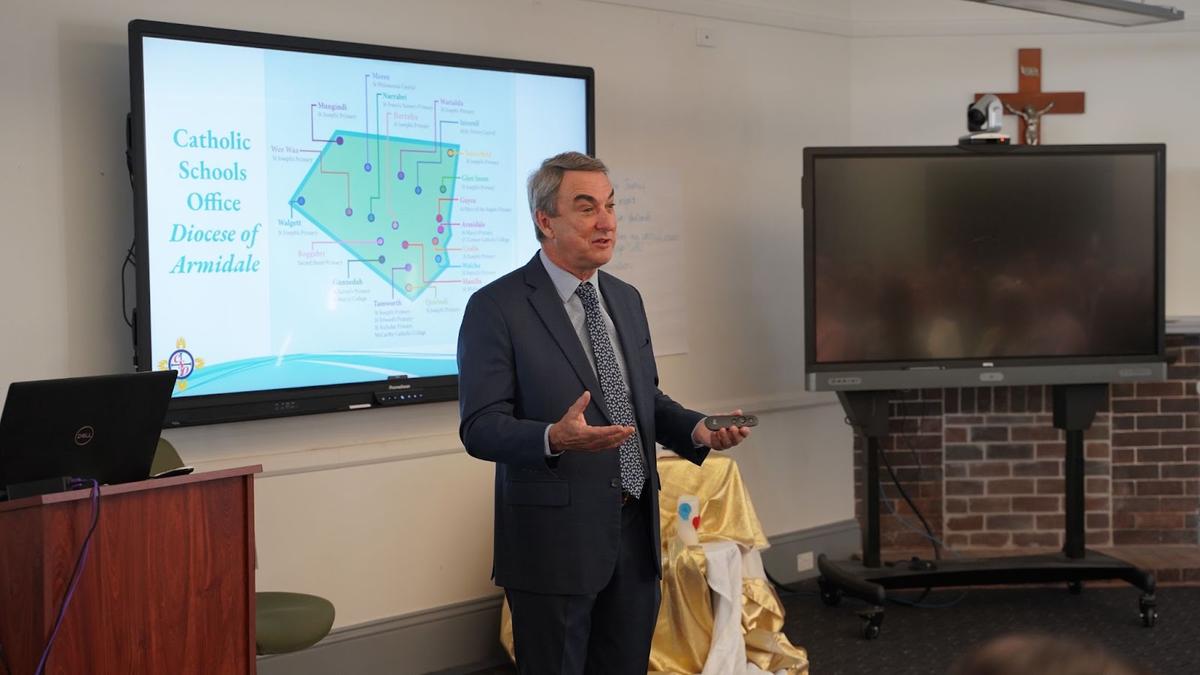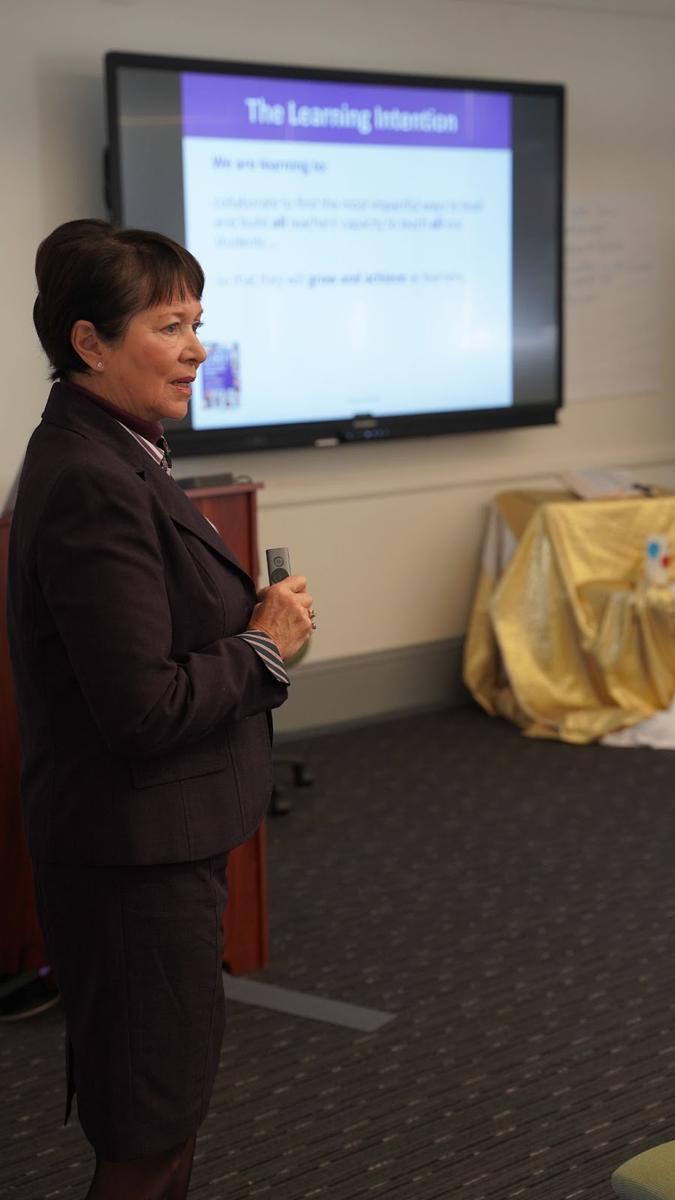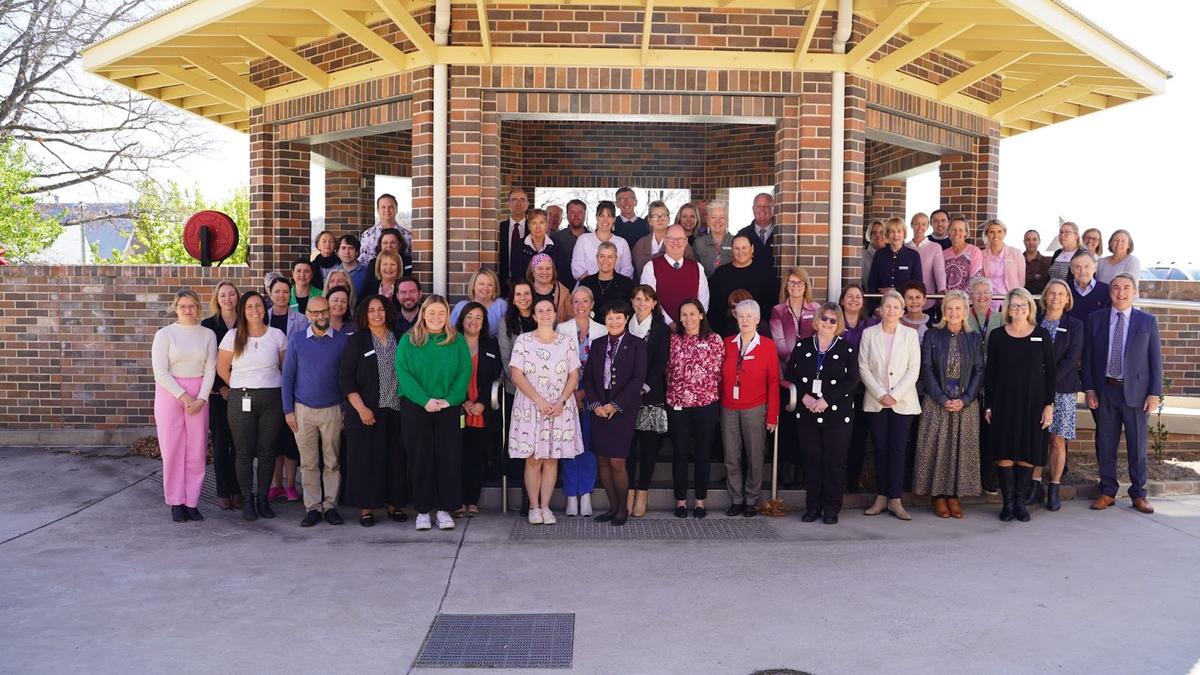Message from the
Director

Message from the
Director
This week we have the privilege of welcoming back into our system of schools Dr Lyn Sharratt from the University of Toronto, Ontario, Canada. Lyn began working with us in 2017 and led professional learning sessions for school leaders for two consecutive years.




This provided us with the capacity building to enable us to use Sharratt and Fullan’s 14 Parameters as a framework for school improvement in literacy and numeracy. In 2018 I wrote the following article in an eBulletin to demonstrate to staff that our culture of a professional learning community in a Catholic context could be aligned to Sharratt and Fullan’s evidenced-based research. Our ongoing efforts for continuous improvement have been based on our initiatives to embed the 14 Parameters across the system of schools. Lyn’s visit will help us to sustain the work!
Aligning the Professional Learning Community concept to the 14 Parameters
The system-wide change process necessitated that leaders and teachers did not perceive some of the changes as ‘just another thing to do’ without any associated impact on culture and performance. The concept of the PLC had to be aligned to Sharratt’s 14 Parameters to demonstrate that the vision was coherent. The link to Hawker Brownlow’s approach to developing a PLC (DuFour, DuFour, Eaker, 2006) and Fullan’s right drivers (Fullan, 2011) was similarly important.
Lyn (Sharratt and Fullan, 2012) helped us to make the links and identify how to achieve ‘deep and sustainable collective capacity building’ in our schools using the 14 Parameters to increase all students’ achievement.
In a PLC, the focus is on LEARNING. Hawker Brownlow (DuFour, DuFour, Eaker, 2006) describes it as ‘transforming curriculum and instruction’. Sharratt (2013) describes it as:
Parameter 2: Embedded literacy/instructional coaches.
Parameter 3: Daily sustained focus on literacy instruction.
Parameter 5: Early and ongoing intervention.
Parameter 7: Professional Learning (PL) at school staff meetings.
In a PLC, the focus is on COLLABORATION. Hawker Brownlow describes it as ‘transforming collaboration and teacher development’. Sharratt (2013) describes it as:
In a PLC the focus is on RESULTS. Hawker Brownlow describes it as ‘transforming assessment’. Sharratt (2013) describes it as:
LEADING THE CHANGE FOR SCHOOL IMPROVEMENT AS AN INSTRUCTIONAL LEADER
Three parameters (1, 4 and 14) remained for us to consider as leaders of the changes needed for school improvement in order to bring about improved student learning outcomes.
Leadership in our schools was enhanced with instructional leadership being about a triad between the principal, leader of pedagogy, and the CSO system coach. Leadership challenges presented by change are further supported by the role of the CSO school consultant. Any advice regarding assessment and instruction can be accessed by the system coach liaising with the appropriate CSO leaders. Expertise not available within the CSO or system of schools was accessed externally, as necessary.
Parameters 1 and 14 were described by Dr Lyn Sharratt as the ‘bookends’ that hold together the work of the leaders and teachers in transforming schools and their cultures. We know that trusting professional relationships underpin this work of change and that the leadership team in the school must model this change.
School leaders must have a vision for change that reflects their deep understanding of the further development of a PLC and the 14 Parameters. Our care for our students demands this of our school leaders. The ‘bookends’ (parameters 1 and 14) require leaders being able to develop ‘shared beliefs and understandings’ (Sharratt, 2013, p.45) based on the system-identified research and, with the CSO and the other system schools, accept ‘shared responsibility and accountability’ for improving student learning outcomes. As indicated by Sharratt (2013, p.48), this requires leadership to embrace ‘the ability to be knowledgeable, to mobilise others and to create sustainable improvements’.


Lyn presented to the whole CSO team in Armidale on Monday. This gave all the team an insight to this story and the improved student outcomes that have resulted from everyone’s engagement in collaboration; literally co-labouring—working together for a shared purpose and outcome which has always been, and continues to be, improved students outcomes.
All our school leaders have the opportunity to join with Dr Lyn Sharratt at either St Philomena's Moree on Tuesday and Wednesday or St Nicholas’s Primary Tamworth on Thursday Friday. The focus on assessment and learning walks and talks will refocus both our knowledge and understanding and help us to sustain our efforts for school and system improvement.
Thank you for all you have done to advance this work across our system of schools.
Best wishes,
Chris Smyth